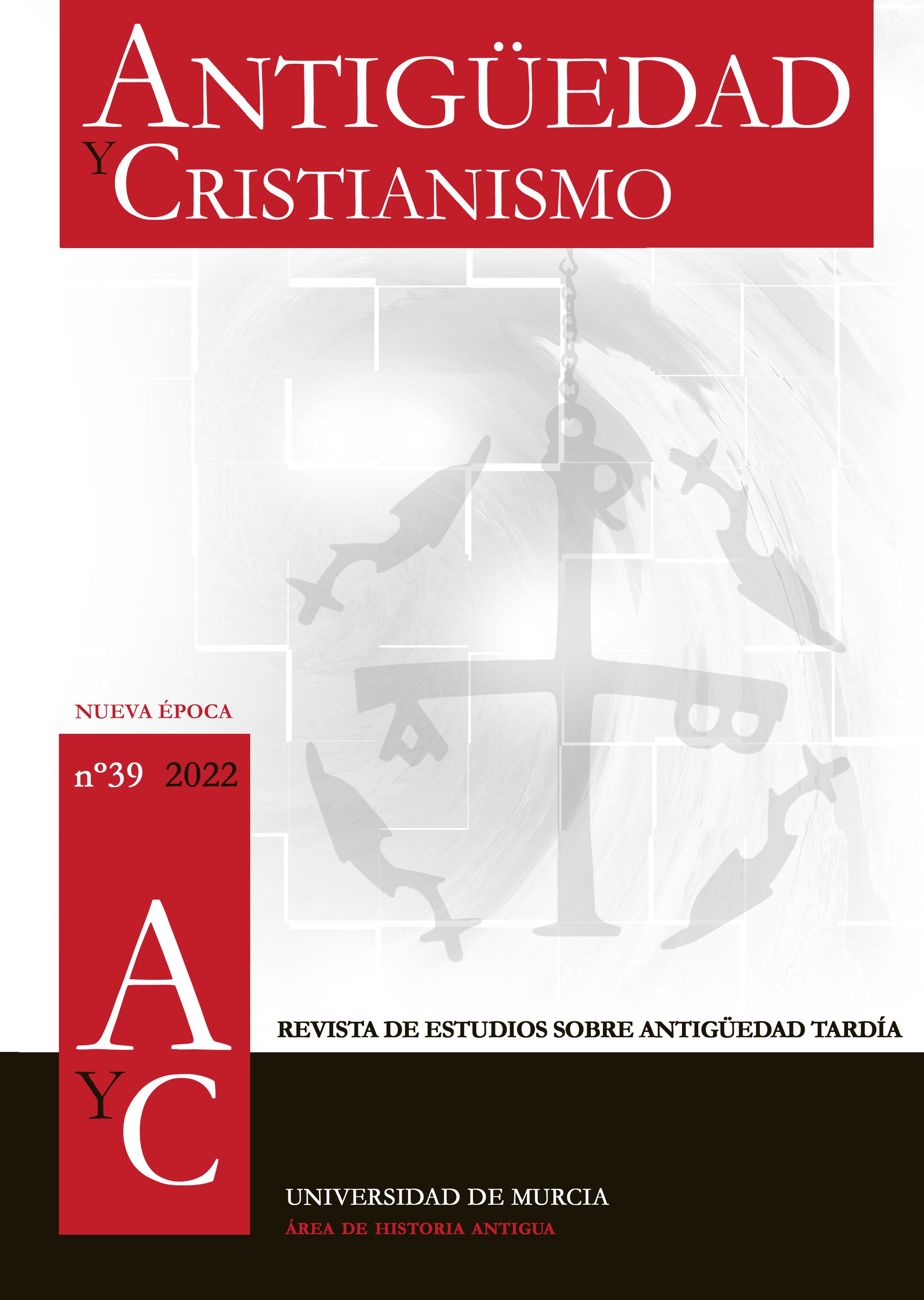From elite military corps to ceremonial ornamentation troops. A critical approach to the Scholae Palatinae
Abstract
During the 3rd and 4th centuries we witness a marked militarization of the socio-administrative framework of the Roman Empire. From the irruption at the institutional level of the military elites to the very morphology of the official buildings, which tried to imitate the distribution of the castra, this situation became a manifest reality. Naturally, in this new military context, the organization of the armed forces was far from the one that had been in force centuries ago. Among the most striking novelties, in view of the study at hand, one in particular stands out: the revaluation of the arms service in the imperial palace. This is where we must place the activity of the scholae palatinae, elite cavalry regiments of 500 men in charge of protecting the emperor and his family.
The trajectory of the scholae is a reflection of the sociopolitical evolution of the Lower Roman Empire, especially in its Eastern half. The development of these contingents reveals a series of problems that suggest a projection that goes far beyond the sphere of war. In this sense, this paper delves into the role played by these horsemen and addresses the reasons that explain their conversion from elite warriors to forces whose scope of action was practically exclusively restricted to ceremonial ornamentation from the 5th century.
Downloads
References
Barlow, J. y Brennan, P. 2001. Tribuni scholarum palatinarum. a.d. 353–64: Ammianus Marcellinus and the Notitia Dignitatum. Classical Quarterly 51 (1), 237–254. https://doi.org/10.1093/cq/51.1.237
Campbell, B. 1994. The roman army. 31 BC- AD 337. A sourcebook. London: Routledge.
Cowan, Ross. 2014. Roman Guardsman 62 BC–AD 324. Oxford: Osprey Publishing.
De la Bédoyère, G. 2017. Praetorian, The rise and fall of Rome’s imperial bodyguard. Ceredigion: Yale University Press.
Elton, H. 2007. Warfare and the Military. En Lensky, N. (Ed.), The age of Constantine, 325-247. New York: Cambridge University Press.
Frank, R. I. 1969. Scholae Palatinae. The palace guards of the Later Roman Empire. Irvine: American Academy in Rome.
Haldon, J. F. 1984. Byzantine Praetorians: An administrative, institutional and social survey of the Opsikion and tagmata, c. 500-900. Bonn: Poikila Byzantina.
Haldon, J. 1999. Warfare, State and Society in the Byzantine World. 565-1204. London: Routledge.
Kaldekis, A. 2018. Leo, ethnic politics and the beginning of Justin I’s career”. Зборник радова Византолошког института, 9-17. https://doi.org/10.2298/ZRVI1855009K
Kelly, C. 2007. Bureaucracy and goverment. En Lensky, N. (Ed.), The age of Constantine, 183-205. New York, Cambridge University Press.
McEvoy, M. 2017. Becoming Roman? The Not-So-Curious Case of Aspar and the Ardaburii. Journal of Late Antiquity 9 (2). 483-511. https://doi.org/10.1353/jla.2016.0021
Neira Faleiro, C. 2005. La Notitia Dignitatum. Nueva edición crítica y comentario histórico. Madrid: Consejo Superior de Investigaciones Científicas.
Sánchez Sanz, A. 2012. La Guardia Pretoriana. De los Julio-Claudios a Constantino. Historia Rei Militaris 3, 13-32.
Treadgold, W. 1995. Byzantium and Its Army (284-1081). Stanford: Stanford University Press.
Whitby, M. 1987. On the Omission of a Ceremony in Mid-Sixth Century Constantinople: Candidati, Curopalatus, Silentiarii, Excubitores and Others. Historia 36, 462-488.
Whittow, M. 1996. The making of Byzantium, 600-1025. Los Angeles: University of California Press.
Woods, D. 1996. The Scholae Palatinae and the Dignitatum. Journal of roman military equipment studies 7, 37-50.
Copyright (c) 2022 Antonio Ruiz Sánchez

This work is licensed under a Creative Commons Attribution-ShareAlike 4.0 International License.
1. The authors non-exclusively assign the exploitation rights (reproduction, distribution, communication and transformation) to the magazine.
2. The works published in this magazine are subject to the Attribution-ShareAlike 4.0 International license (CC By SA 4.0). Therefore, they can be copied, used, disseminated, transmitted and publicly displayed, provided that:
i) the authorship and the original source of its publication (journal, editorial and URL of the work) are cited, thus allowing its recognition.
ii) it is allowed to remix, transform or create from the material while maintaining the same license as the original.
Note: Articles prior to 2022 incorrectly display the CC by SA license in the abstract page. They are under a CC by NC ND license as embedded in the article pdfs. Articles published in 2022 and after are under the CC by SA license.

3. Self-archiving conditions. Authors are allowed and encouraged to electronically disseminate the pre-print (version before being evaluated) and/or post-print (version evaluated and accepted for publication) versions of their works before publication, as it favors their publication. Earlier circulation and diffusion and with it a possible increase in its citation and reach among the academic community. Color RoMEO: verde.























